I have spent the past twenty days discussing science and life aboard a U.S. Coast Guard Ice Breaker, and do not think I have done justice to the "WHY" I am here, and the "WHAT" this will tell us.A grant was written for an extensive five year study of the Eastern Bering Sea shelf, (BEST)The Bering EcosystemAn ecological community together with its environment, functioning as a unit. Study. This program involves the collaboration of many scientists, and multiple agencies that research marine ecosystems.
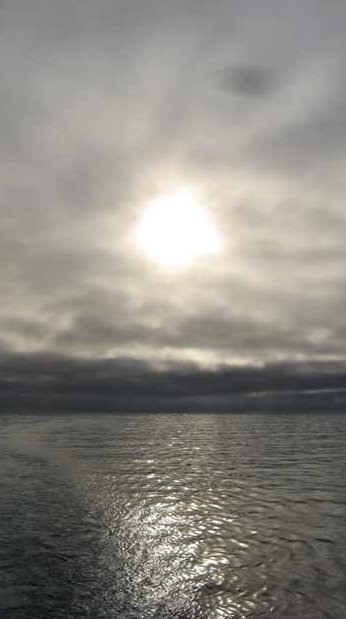
One component of this cruise which I find extremely fascinating is the link between all the sciences of the scientists. It is as if the HEALY is its own food web. Water samples that the krill grazers use are also vital for people studying oxygen, in turn used by people studying phytoplankton, and again by those studying the benthic region, and again by scientists looking at nutrients. Where each team of scientists has their own particular niche of study, or specialty, all together they are making a collaborative map or picture representing the Bering EcosystemAn ecological community together with its environment, functioning as a unit.. This data will be used as a benchmark for future research while adding significantly to the knowledge base provided by decades of previous Bering Sea research. The Earth is changing. For scientists it is important to see how these changes will affect the health and productivity of different ecosystems.
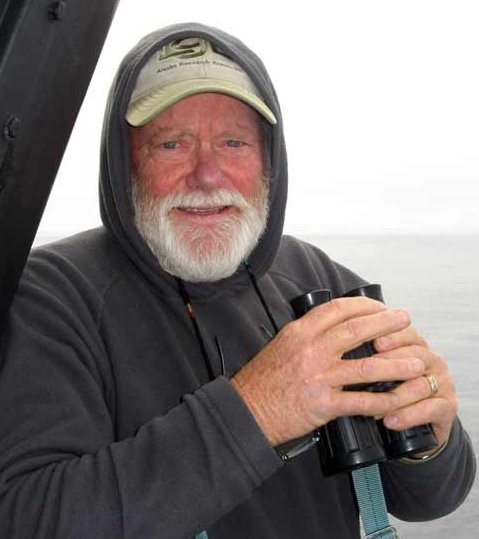
Today I spent some time with two scientists on board the HEALY that we have not yet met, one of the ornithologists and the mammalogist. First there is Gary Friedrechsen, he spends his day in "aloft-con," approximately 25 feet above the ship's bridge, in a little room with a glorious view of the sea. Gary is looking for right whales and works for the National Marine Fisheries Service, a branch of NOAA, and "right" now is looking for the "rights!" Historically considered the "right" whale to hunt due to the fact that they did not sink when harpooned, these majestic beauties were hunted to the brink of extinction. Gary is on the HEALY hoping to get a glimpse of the remnant northwest population who are believed to number less than one hundred. These whales have not been seen in quite some time with surveys dating from 2005 with no whale sightings.
This fall the northwest marine mammal lab will even hire a crab boat out of Dutch Harbor and dedicate two months to finding this illusive pod. The BEST cruise is very diverse because we will now go down the stairs from "aloft-con" to the bridge and there is Tom van Pelt, marine scientist for BSIERP ( Bering Sea Integrated EcosystemAn ecological community together with its environment, functioning as a unit. Research Program). Tom spends his day recording bird species found in a 300 meter sampling area port side of the center line of the ship. He uses specialized computer software to log all observations; so that once he enters his user input the computer will attach the longitude, latitude, weather data, and seas to each of his sightings. One of the goals in his part of this project is to try and understand where birds and mammals are feeding. ZooplanktonSmall or microscopic aquatic animals that float or drift in fresh or salt water., phytoplankton, even ocean currents all directly drive sea bird distribution, so correlating the observed species with all the other scientific data collected during the day really does allow for the development of an excellent ecosystem model.
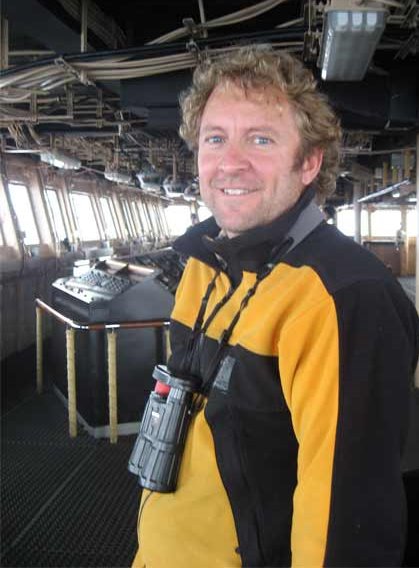
One of the great components of the BEST/BSIERP study is that time was written into the grant to take the data collected by the various scientific teams and compile the results. Often grants do not have a lot of analysis time, and in this case there will be a synthesis between all the different teams to make a comprehensive document on the current state of the Eastern Bering Sea Shelf.
Hopefully by 2012 this integrated study will provide a model of the Bering Sea from the benthic regions to the surface and above showing the relationships between marine species and ALL ecosystem components that affect and change living conditions.
But again, all work and no play, makes Jillian sad...
The euphas-ettes" doing a back deck dance to call in the krill.
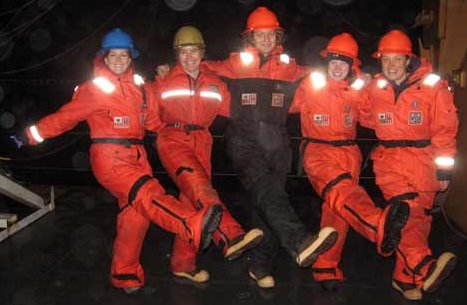
Photo of the day:
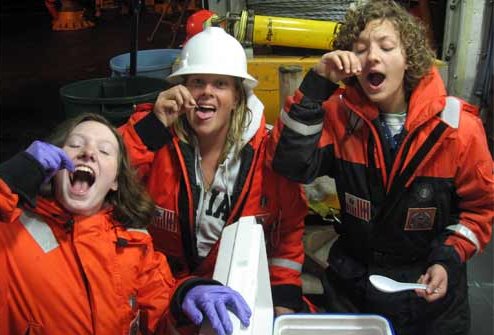
**Poem of the Day: ** Wild Nights! by Emily Dickinson Wild Nights! Wild Nights! Were I with thee, Wild Nights should be Our luxury! Futile the winds To a heart in port, -- Done with the compass, Done with the chart! Rowing in Eden! Ah! the sea! Might I but moor To-night in Thee!
FOR MY STUDENTS: Could we develop an ecosystem study for the area surrounding school to include the pond, and Mars Hill?


Comments